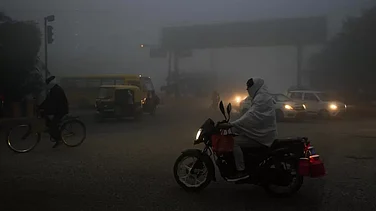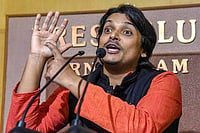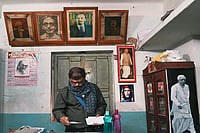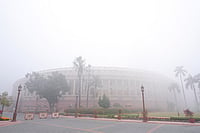In Madhya Pradesh, the Congress seems to have decided that the Vajpayee name is not as sterling as it was in 96 and 98, that Kargil is no factor in rural areas and that its fair to attack Vajpayee in the same manner as Sonia is being targeted. Theres just a 1 per cent difference in the voteshare between the Congress and the BJP, with both around the 45 per cent mark after last Novembers assembly election. But over the three elections since 96, when a fragmented Congress did abysmallygarnering only 31 per cent votesit has steadily increased its share to 39.40 per cent in March 98 and 45 per cent in November. Thats an impressive 14 per cent increase in three years. The bsps share of the vote has been steady at 8 per cent. Thus, only a 6 per cent swing away from the Congress will enable the BJP to retain its 30 seats while even if it loses 3 per cent voteshare over the assembly results, it will still wrest half-a-dozen seats.
The state is so sharply polarised between the BJP and the Congress that even in a worst-case scenario, either party will get at least 10 seats. Vajpayee, Sonia and Kanshi Ram have addressed public meetings in succession here and if attendance is any indication, then their parties will finish in that order. In the last Lok Sabha elections, the Congress secured 10 of the 40 seats and the BJP secured the rest. The big question this time is not how many seats each of these parties will win but how far both will be successful in retaining their seats. The Vajpayee-Kargil wave will have to be the kind of overwhelming reality that the BJP expects it to be for it to retain more than 25 seats under the present conditions.
But pre-poll calculations have a way of going awry. No one knows this better than the man whos been behind the rise of the Congress from its Rao-Hawala-Congress (T) ashes in 96 to winning against odds in the state polls of 98: chief minister Digvijay Singh. He was skilfulsome say fortunatein eliminating the challenge of a bagful of party heavyweights from Arjun Singh and Scindia to Kamal Nath and the Shukla brothers to emerge as the sole flag-bearer of the party in the state. Today, if there is any other usp that the Congress has in MP other than Sonia, then it is the chief minister.
Even arch-critic Arjun Singh grudgingly admits: "We will win on the basis of the performance of the state government." But a year ago, there were those in the Congress who were ready to write him off. Indeed, in the run-up to last years assembly polls, only Digvijay believed and managed to convince Sonia that the Congress would return to power, and it did. Thatand his unflagging loyalty to the Gandhi familyhas won him the confidence of 10, Janpath to the extent that Sonia cites his example every time she is told of bleak pre-poll predictions.
The BJP, whose overconfidence in the assembly polls more than anything else cost it dearly, has been cautious in its approach this time. It firmly believes that Digvijay has devised a foolproof method of winning elections through manipulation of the district administration and has been busy registering complaints with the Election Commission, ranging from demanding the removal of the SP of Chhindwara to asking for more central forces in Rajgarh. Digvijay on his part would like the world to believe that the Congress has managed votes in the past solely on the basis of its good governance and not rigging.
In the absence of any wave, it is difficult to hazard any prediction this time. But both the BJP and the Congress know that in the absence of any real issues, there is very little that separates the two parties. For the voters, then, it seems a case of six of one and half-a-dozen of the other.


























